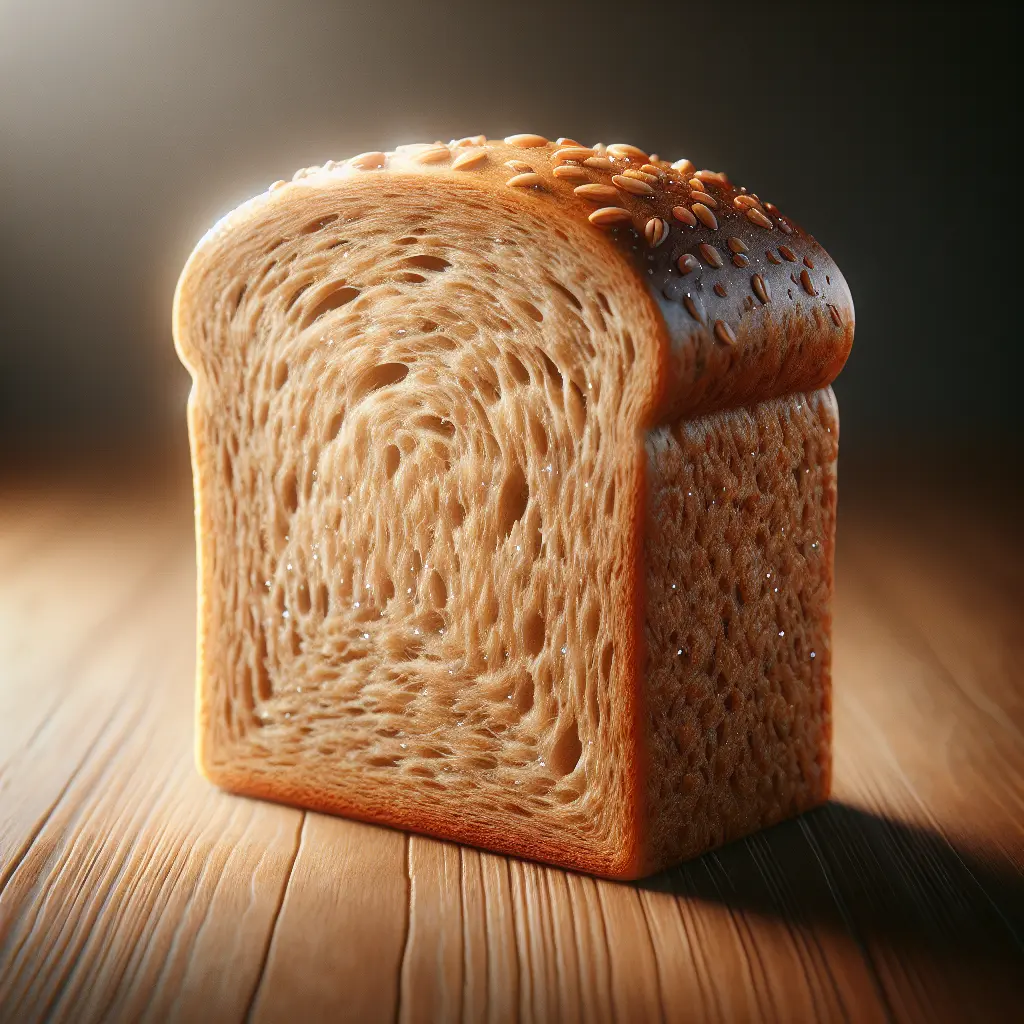Whole Wheat Bread: A Nutritional Powerhouse
Whole wheat bread is a cornerstone of healthy diets worldwide. Crafted from the entire grain, including the nutrient-rich germ and bran, it stands apart from refined white bread, which has been stripped of these vital components. Whole wheat bread is not only a delectable addition to meals but also a nutritional powerhouse.
Nutritional Profile
Each slice of whole wheat bread, weighing approximately 28 grams, packs a nutritional punch:
- Calories: 81
- Protein: 4 grams
- Fat: 1.1 grams
- Carbohydrates: 14 grams, primarily complex carbohydrates for sustained energy
- Fiber: 1.9 grams, promoting digestion and satiety
- Sugar: 1.4 grams, naturally occurring from the grain
- Vitamins: Rich in B vitamins, essential for energy metabolism
- Minerals: Contains iron, zinc, and magnesium, vital for overall well-being
- Antioxidants: Abundant in antioxidants, which protect against cell damage
Health Benefits of Whole Wheat Bread
The consumption of whole wheat bread has been associated with numerous health benefits, including:
- Improved Digestive Health: The insoluble fiber in whole wheat bread acts as a natural laxative, aiding digestion and preventing constipation. Soluble fiber, on the other hand, slows down the absorption of sugar, promoting stable blood sugar levels and reducing the risk of type 2 diabetes.
- Reduced Risk of Heart Disease: Whole wheat bread contains compounds called lignans, which have antioxidant and anti-inflammatory properties. These compounds have been linked to a reduced risk of heart disease. Additionally, the soluble fiber in whole wheat bread can help lower cholesterol levels.
- Weight Management: The combination of complex carbohydrates and fiber in whole wheat bread promotes satiety and reduces hunger cues. This can aid in weight management and prevent overeating.
- Improved Mood and Cognitive Function: Whole wheat bread is a good source of tryptophan, an amino acid that is converted into serotonin, a neurotransmitter associated with mood regulation and cognitive function.
Incorporating Whole Wheat Bread into Your Diet
Whole wheat bread is a versatile food that can be incorporated into various meals and snacks. Here are some ideas:
- Toast: Toast a slice of whole wheat bread and spread with your favorite toppings, such as avocado, hummus, or nut butter.
- Sandwiches: Create nutritious sandwiches with whole wheat bread as the base, adding lean protein, vegetables, and healthy fats.
- Croutons: Cut whole wheat bread into cubes and toast them to make crispy croutons for salads and soups.
- Breadcrumbs: Use dried whole wheat bread crumbs to add texture and flavor to meatballs, fish dishes, and casseroles.
Conclusion
Whole wheat bread is a nutritious and satisfying food that deserves a place in every healthy diet. Its complex carbohydrates, fiber, vitamins, minerals, and antioxidants contribute to overall well-being. By incorporating whole wheat bread into your meals, you can reap its numerous health benefits and enjoy its delectable taste.
How many calories are in Whole Wheat Bread?
Each 1 slice of Whole Wheat Bread contains 81 calories.
Whole Wheat Bread Nutritional Information
| Nutrient | Amount per 1 slice (32g) |
|---|---|
| Calories | 81 Calories |
| Protein | 4g |
| Fat | 1.1g |
| Saturated Fat | 0.2g |
| Cholesterol | 0mg |
| Carbohydrates | 14g |
| Dietary Fiber | 1.9g |
| Sugar | 1.4g |
| Sodium | 0.146mg |
| Potassium | 0.0813mg |
| Calcium | 0.052mg |
| Iron | 0.0008mg |
